I have written previously about the Scottish gunmaker J. D. Dougall and described several of his guns. This article is focused on his sub-gauge shotguns and a rook rifle. The three shotguns are a 410 bore, a 28 bore, and a 20 bore. The rook rifle is a 360 No. 5 caliber.
The 410 Bore
The 410 bore is definitely the runt of the shotgun trio. At first glance, the gun looks like a toy. It weighs in at a mere 4 ¼ lbs. It is chambered of a 2” cartridge, the original chambering for the 410. The gun has no serial number.
The 410 is a back-action, hammer gun. (The hammers have been improperly blued). The length-of-pull of 14 ¼” indicating that it was not built for a child. The engraving is simple. The butt stock is straight-hand, and nicely figured. The drop at the comb is 1 ½” and at the toe is 2 ¼”. The gun was clearly an inexpensive gun, but its scale and dimensions make it interesting. See Figure 1
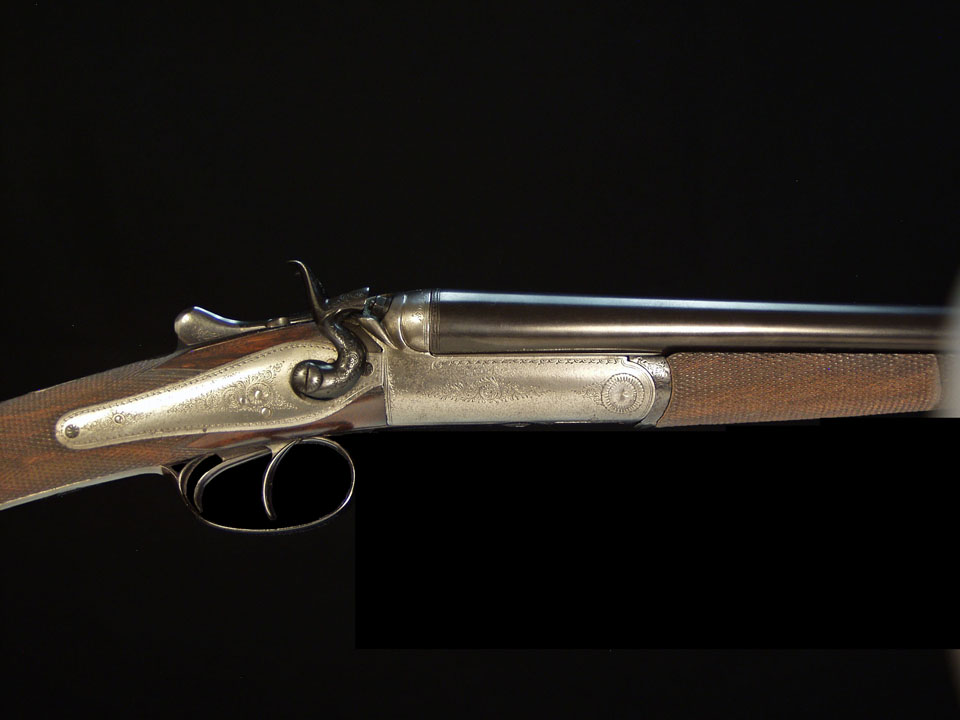
The barrels are steel, a full 27” inches long. They are signed “J. D. Dougall and Son, 8 Bennett St. London”. The lock is also signed “J. D. Dougall and Son” The gun was originally London proofed following the 1896 to 1904 proof laws. It was reproofed for nitro following the 1954 to 1989 proof laws. Chokes are full in both barrels. The gun balances about ¾” in front of the hinge pin. The gun has been cased in a vintage case with an appropriate set of tools (Figure 2).
I have attempted to shoot sheet with the little gun. The 410, 2-inch shell, contains a mere 3/8 oz. of shot. Needless to say, my attempts were not wholly successful. The gun is extremely whippy. When struck, the clay sort of dripples apart, rather than exploding. Not very impressive, but fun.
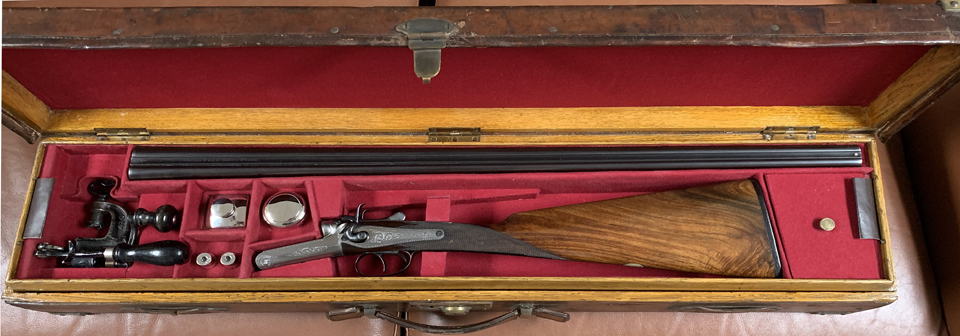
The 28 Bore
The 28 bore, while still relatively a plain gun, it is a little higher in quality than its younger 410 brother. (See Figure 3). The rib is simply marked “J. D. Dougall Glasgow”. Based upon the gun’s rib address and serial number of 3872, the gun was made between 1880 and 1883. However, the original London proof marks are of a later date (1887 to 1898 proof laws). The bores were 30 and 29 at that time. The gun was nitro proofed in the 1954 to 1989 period when the gun bore measured .551 and .547.
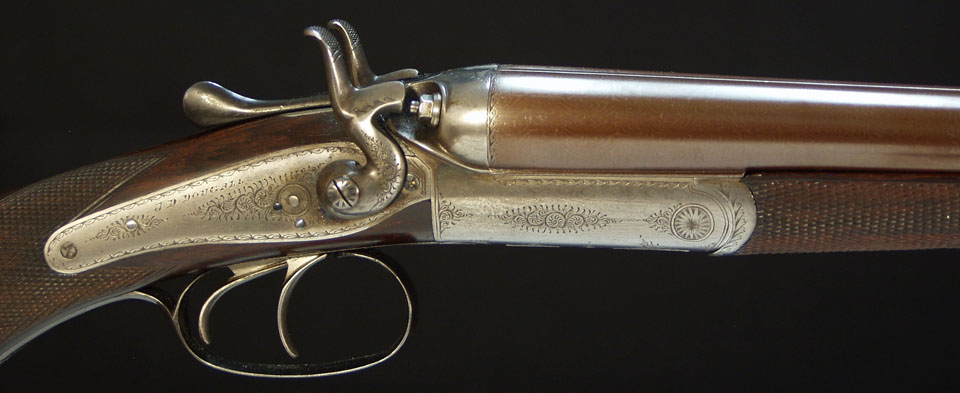
The gun weighs in at 4 3/4 lbs. Length of pull is 14 ½”. Drop at the toe is 1 ½” and at the heal is 2 ¼”, identical to the 410. It balances perfectly on the hinge pin.
The barrels are Damascus 26” long and are choked IC and a tight full. The stock is a full pistol grip with an ebony grip-cap. It has a richly figured butt stock. The gun has been cased in a vintage case with a collection of tools contemporary to the gun. (See Figure 4.)
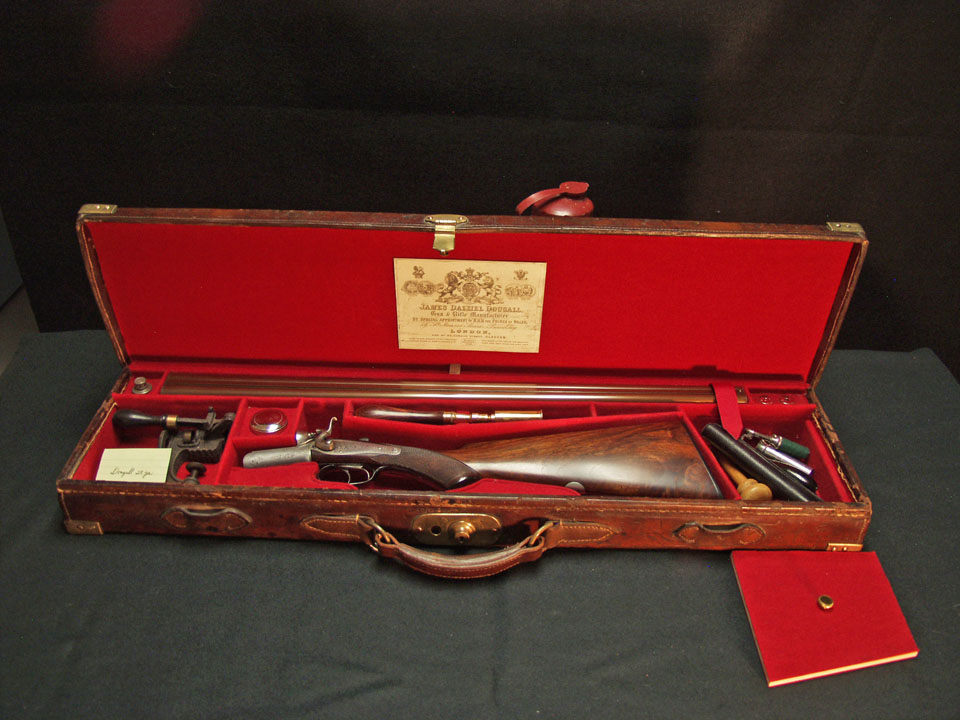
The 20 Bore
The 20 bore is by far the most sophisticated gun of the trio. It is a bar-action hammer gun. (See Figure 5.) It weighs in a 5 1/4 lbs., balancing under the hinge-pin. Barrels are fine Damascus, 30 inches long, choked skeet and improved cylinder. The rib style is “J. D. Dougall Gun Maker to H.R.H. the Prince of Wales 39 Gordon Street, Glasgow.”
The gun is London proofed. Marked “Not for Ball” indicating it was originally proofed between 1875 and 1887. It was nitro reproofed between 1989 and 2006. The serial number is 3290 would indicate that it was built around 1878, making it the oldest of the three guns
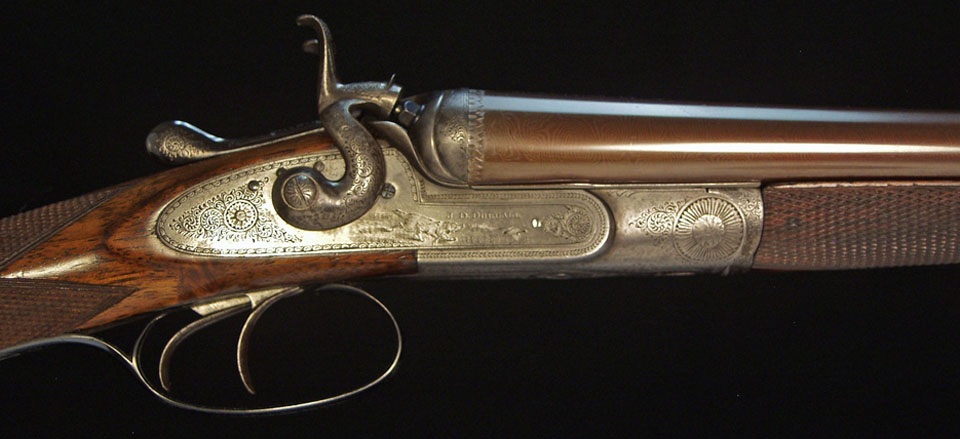
The stock is a very well figured, straight-hand stock. Length-of-pull is 14 5/8”, drop-at-comb is 1 ¼” and drop-at-heel is 2 ½”. The butt plate is ebony.
The action is game-scene engraved on both locks with a dog chasing a bird. The rest of the action is three-quarters covered with scroll work.
The gun has been cased with a vintage case and associated tools. It is a great little quail gun. (See Figure 6).
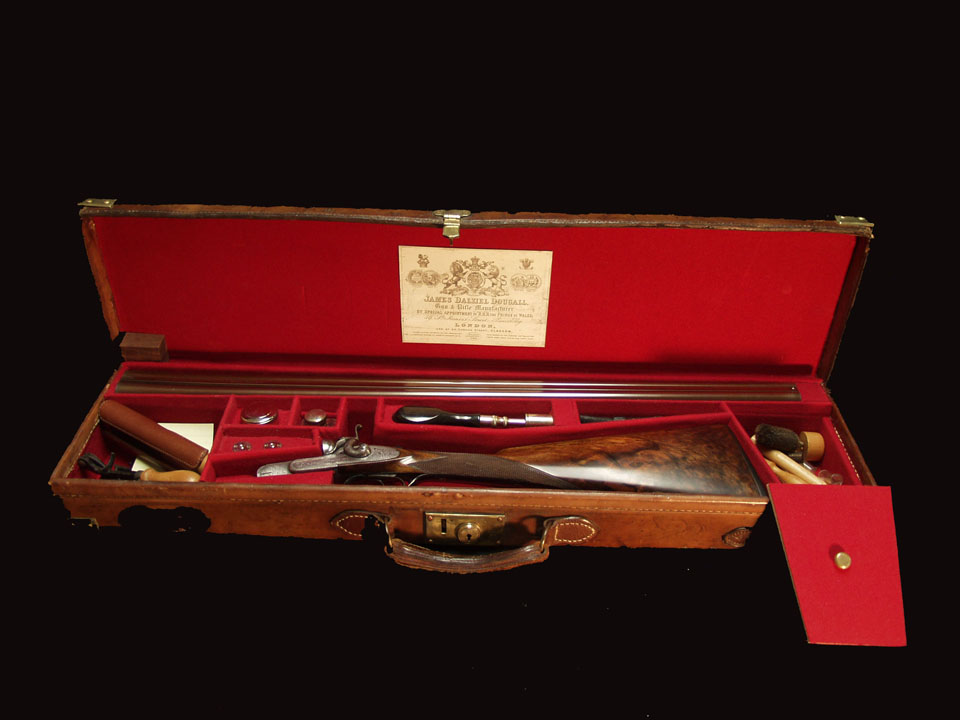
A Final Note on the Shotguns.
I suspect that the locks of the 410 and the 28 bores were not made by Dougall. They are rather unsophisticated. The fact that there is no serial number on the 410 bore makes one wonder about its origin. The quality and dimensions of the stock, however, are better than might be expected on an inexpensive 410 bore.
The Damascus barrels on the 28 bore appear to be of high quality. Although why the address on the rib is incomplete is a mystery. The 20 bore, on the other hand, is a quality gun and I suspect is the product of the Dougall shop.
The 360 No 5 “Dougall” Rook Rifle.
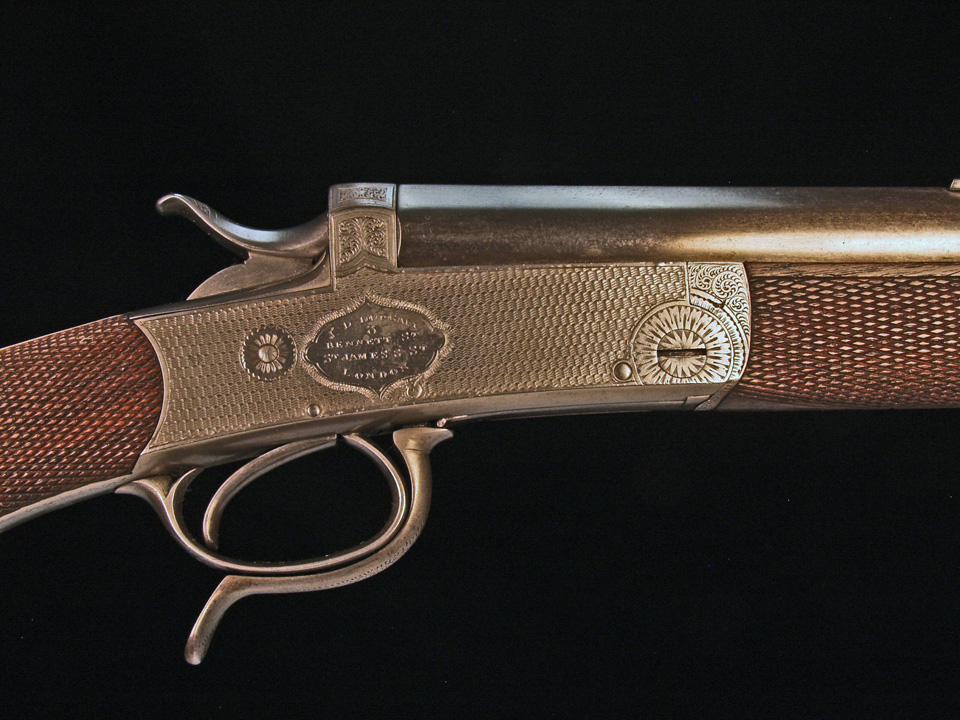
The little rifle is weighs in at exactly 5 pounds. Overall length of the gun Is 40 ½”. Length of pull is 14 ¼”. The barrel is round but has an integral flat rib on top. The rib is machine engraved. The barrel measures 25” and is ¾” in diameter at the muzzle.
The action is an under-lever, non-rebounding, ejector action. It has dense coverage of an unusual basket-weave engraving pattern including on the butt plate. The underside of the action and the trigger-guard tang are not engraved, however. The stock is a full pistol grip and well figured. The grip-cap is steel. Checkering is well done.
The gun has a shield with the inscription “J. D. Dougall, 8 Bennett St, St James St, London”
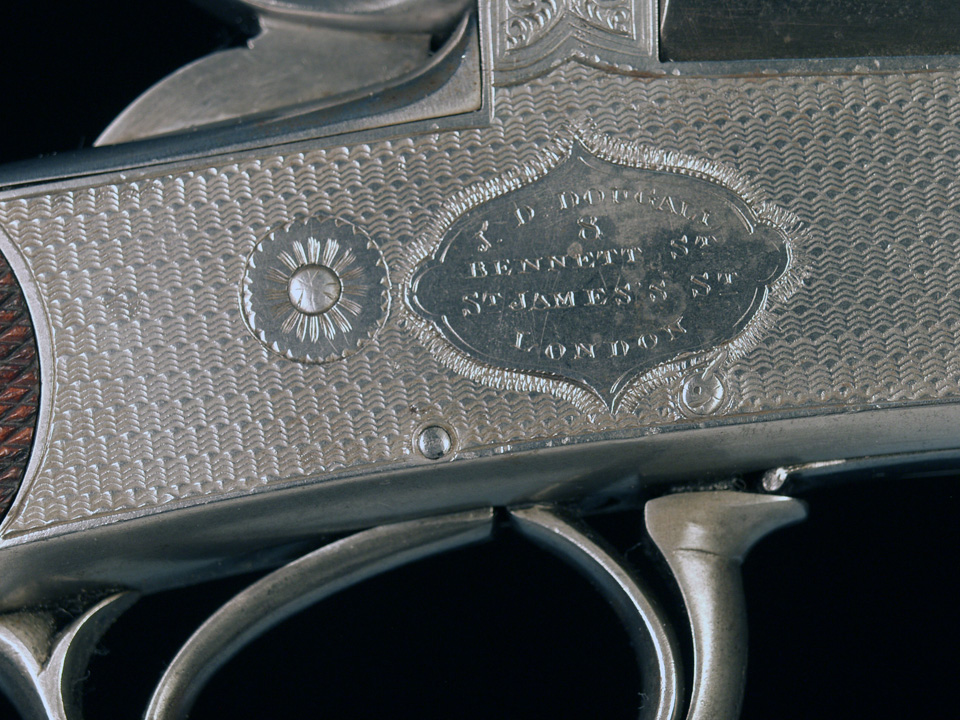
Barrel markings include the following: Birmingham proofs; the number 985; the number 7456; and a modern stamping “38 Special.” The number 985, appears to be an assembly number, since it also on the forend iron. The number 7456 appears to be a serial number, but it is way out of the range of Dougall serial numbers. The “38 Special” is an example of “one can not believe everything that they read”. A “38 Special” case will not even fit in the rifle’s chamber. The 38 special case must be trimmed from 1.29” to 1.04” to produce the 360 Number 5 case. Apparently, the gunsmith never even tried an untrimmed case in the gun prior to marking it.
There are two matters about the gun that I find intriguing. First, the front sight, which appears to be original, is virtually useless when in its folded-down position. I wounder if the indent was to point the gun, if at close range using the rib. as one would a shotgun. Second, why did the British gunmakers (or their customers) believe that it took a .38 caliber cartridge to kill a rabbit or a bird. A .22 long rifle would accomplish the mission and was a whole lot more accurate.
Who Actually Made the “Dougall” Rook Rifle?
An excellent book on rook rifles is The Classic British Rook and Rabbit Rifle by Colin Greenwood (1). Chapter 13 in the referenced book is entitled “All of a Kind.” The information presented in the following paragraphs originated from Mr. Greenwood’s outstanding research.
The “Dougall” rook rifle has three traits which identify this rifle as the work of S. B. Allport, a Birmingham gunmaker for the trade. All of the rook rifles made by Allport have these traits in common: an underlever action, the unusual basketweave engraving, and the shield containing the “makers” information.
Dougall is in good company. Allport rifles were sold by Boss, Purdey, and Rigby. My rifle is identical to Rigby rifle #6938. Allport also made rook rifles for other excellent gunmakers of only slightly less cache, such as W. C. Scott, Thomas Bland, and Alexander Henry. He also sold rook rifles to several non-gunmaker retailers. Mr. Greenwood’s research even provides some insight into the serial numbers of Allport’s rook rifles. My Dougall rifle was made around 1886. In all, Allport made about 3,200 rook rifles being sold under various names.
Mr. Greenwood also states that the rifles could be ordered in different qualities and illustrates the varying quality of stocks. Based on his examples, the my Dougall rook rifle rates as a top quality Allport gun.
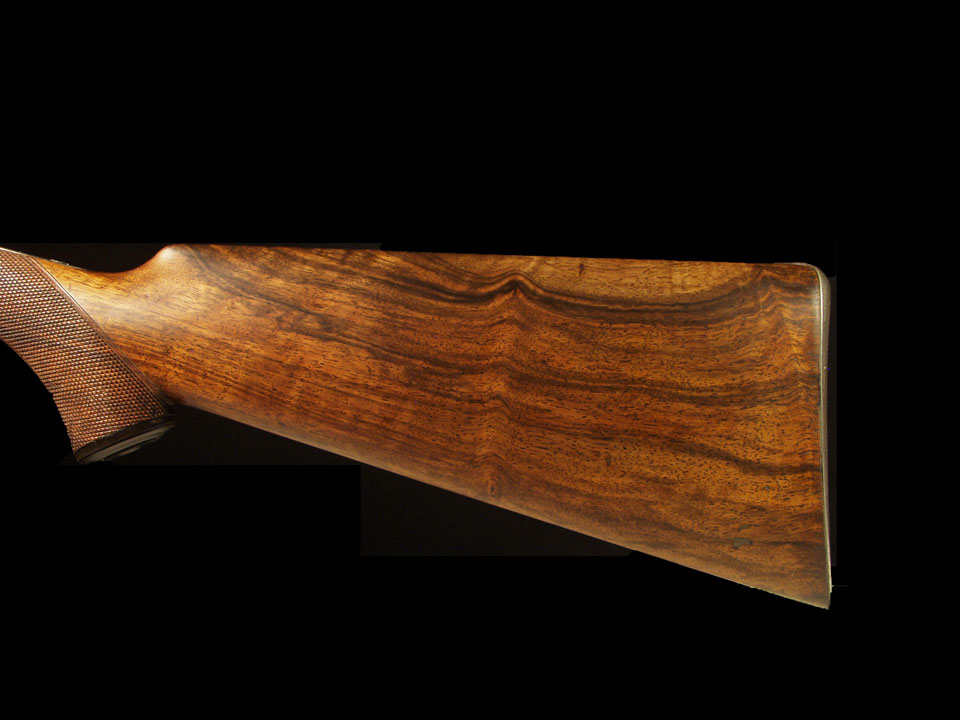
It is usually difficult to know what gunmaker actually built a given gun. In this case, due to the Mr. Greenwoods research and Purdey having records documenting where they had procured the rook rifles sold under their name, we do know who made the “Dougal”l rook rifle. Allport’s constant use of his signature engraving, his use of the shield to identify the “gunmaker”, and underlever action has allowed the identification of his work, regardless of the varying patterns he used for his rook rifles. Rarely are we this fortunate.
If any reader has information on Dougall percussion guns, please contact the author by email at captrkirk@yahoo.com.
The Classic British Rook and Rabbit Rifle by Colin Greenwood, Crowood Press, 2012
Published by Vintage Guns Ltd on




